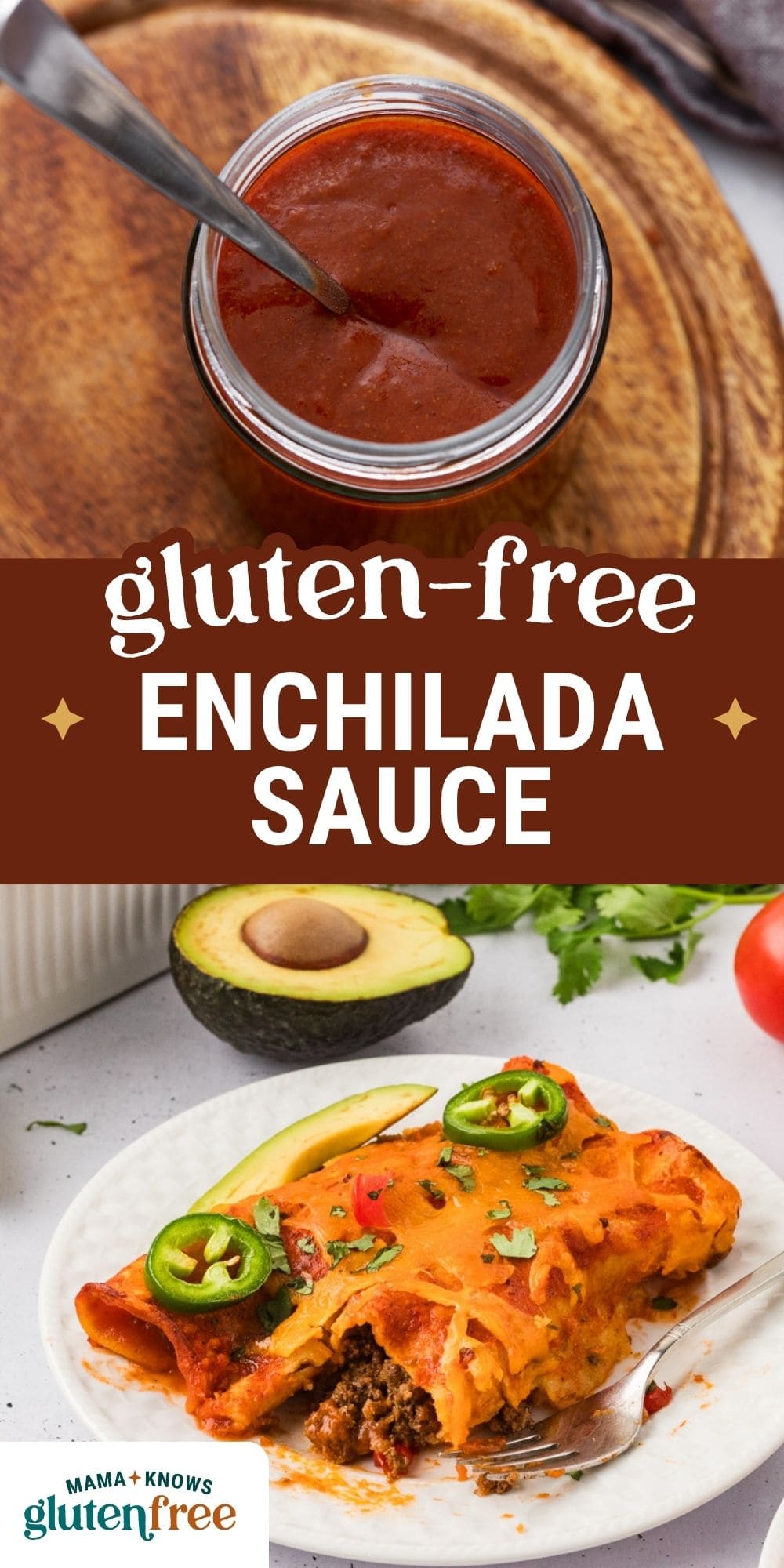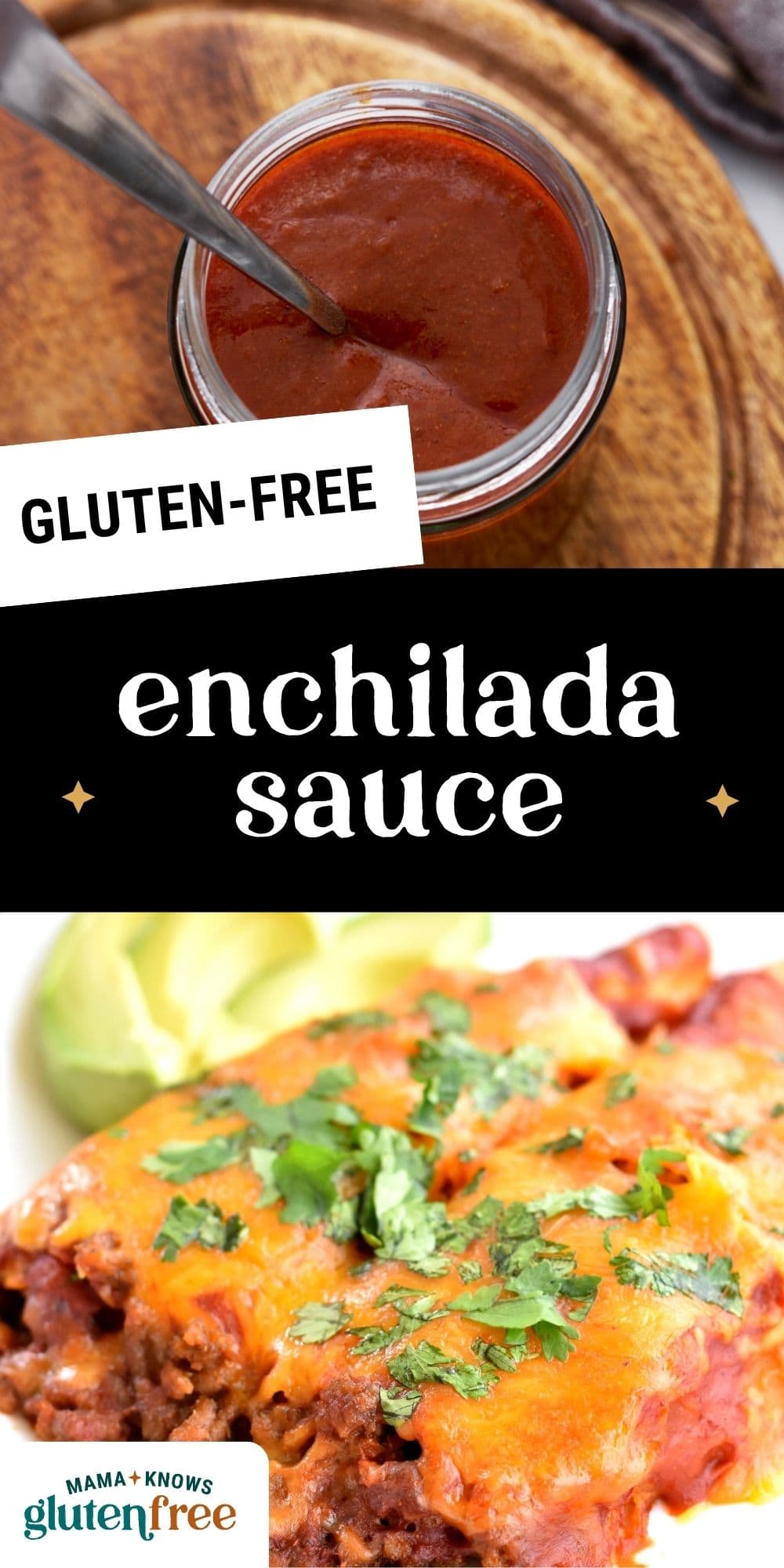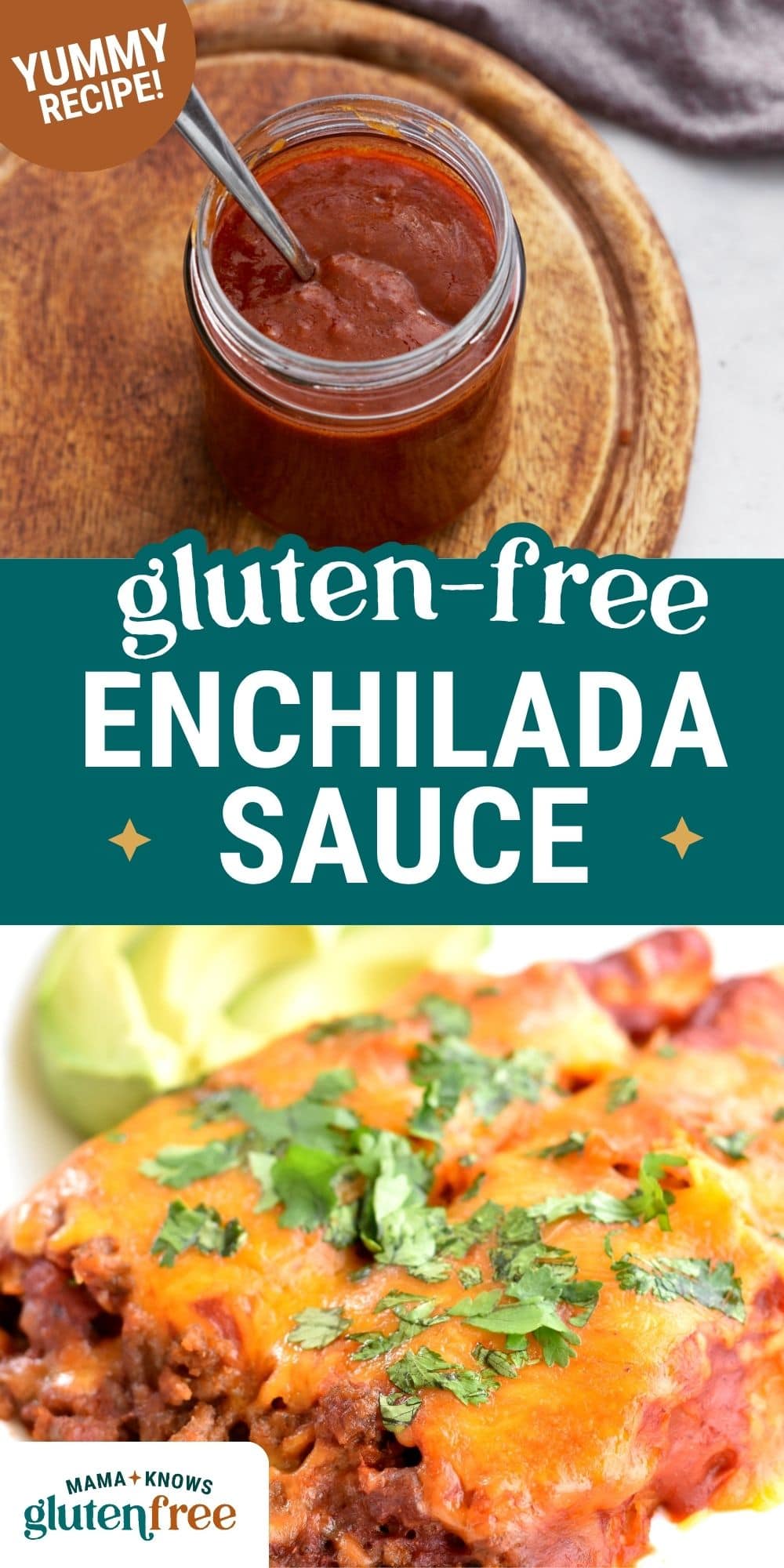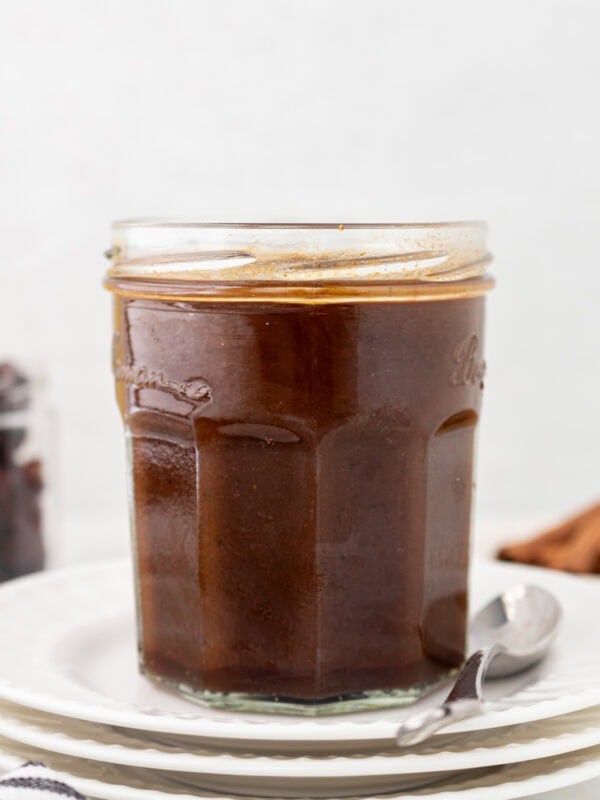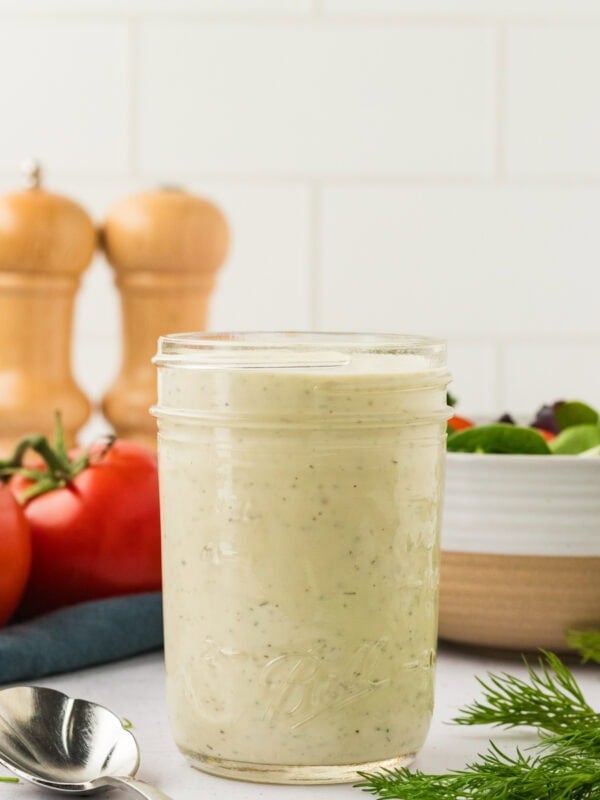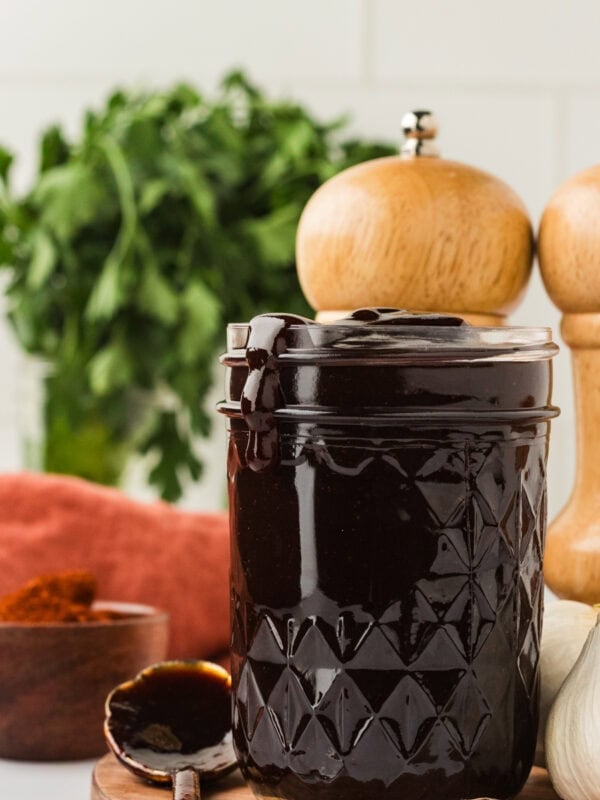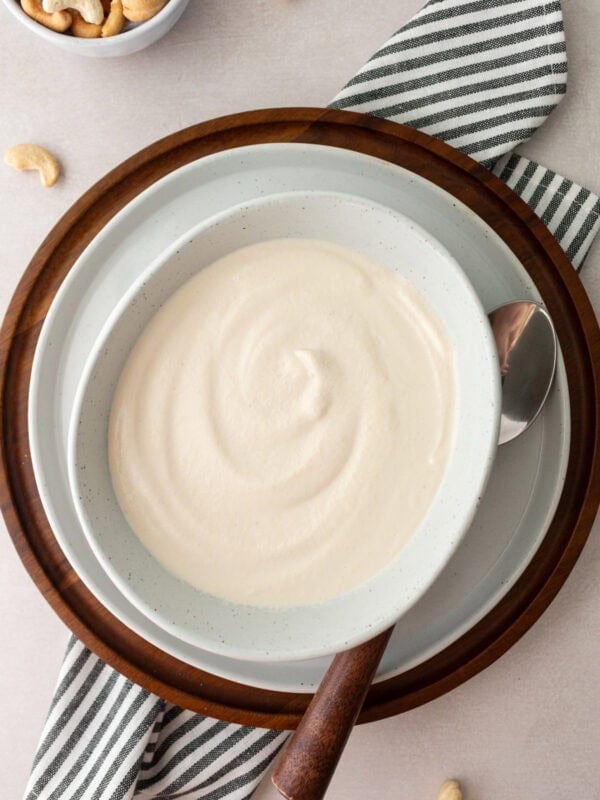Gluten-Free Enchilada Sauce
Published
If you’re gluten-free, finding a store-bought enchilada sauce that checks all the boxes can be tricky. That’s why I always make this easy gluten-free enchilada sauce at home. This sauce is bold, rich, completely dairy-free, and comes together in about 10 minutes with pantry staples. Whether you’re whipping up a weeknight enchilada bake or adding a drizzle to tacos or burrito bowls, this homemade sauce delivers big flavor without the guesswork.

Easy Gluten-Free Enchilada Sauce Recipe
There have been plenty of times when gluten-free enchiladas were on my menu for the week, only to realize I couldn’t find gluten-free enchilada sauce anywhere. I figured—how hard can it be? Turns out, not hard at all. I love that I get a rich, thick sauce without any added thickeners—just a simple gluten-free roux made with olive oil and flour. Tomato paste adds depth, while spices like chili powder, cumin, garlic powder, and paprika bring all the bold, savory flavor. It’s easy to customize, rich in taste, and I use it for way more than just enchiladas.
Gluten-Free Enchilada Sauce
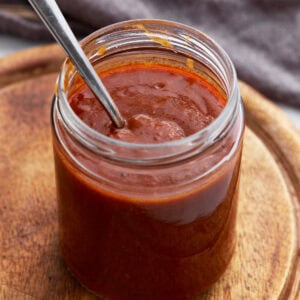
Ingredients
- 2 tbsp olive oil
- 2 tbsp gluten-free all-purpose flour blend
- 1 tbsp chili powder, adjust for spice preference
- ½ tsp garlic powder
- ½ tsp onion powder
- ½ tsp ground cumin
- ¼ tsp dried oregano
- ¼ tsp smoked paprika, optional
- ½ tsp salt
- ¼ tsp black pepper
- 2 tbsp tomato paste
- 1¾ cups gluten-free vegetable or chicken broth
- 1 teaspoon apple cider vinegar
Instructions
- In a medium saucepan, heat the olive oil over medium heat. Whisk in the gluten-free flour and cook for 1–2 minutes, stirring constantly, to form a smooth roux.
- Add chili powder, garlic powder, onion powder, cumin, oregano, smoked paprika, salt, and pepper. Cook for 30 seconds until fragrant.
- Stir in the tomato paste, mixing well.
- Gradually pour in the broth, whisking constantly to prevent lumps.
- Bring the mixture to a simmer and cook for 5–7 minutes, stirring often, until the sauce thickens. Stir in the vinegar and adjust the seasoning to taste.
- Remove from heat and use immediately, or let cool and store in the fridge for up to 5 days.
Notes
- Use a mild chili powder for a kid-friendly version or a hotter blend for a real kick.
- No tomato paste? Sub with 1/3 cup tomato sauce and reduce the broth slightly.
- Too thick? Add a splash of broth. Too thin? Simmer 2–3 minutes longer.
Nutrition
Nutrition information is automatically calculated, so should only be used as an approximation.
How to Make Gluten-Free Enchilada Sauce Step by Step
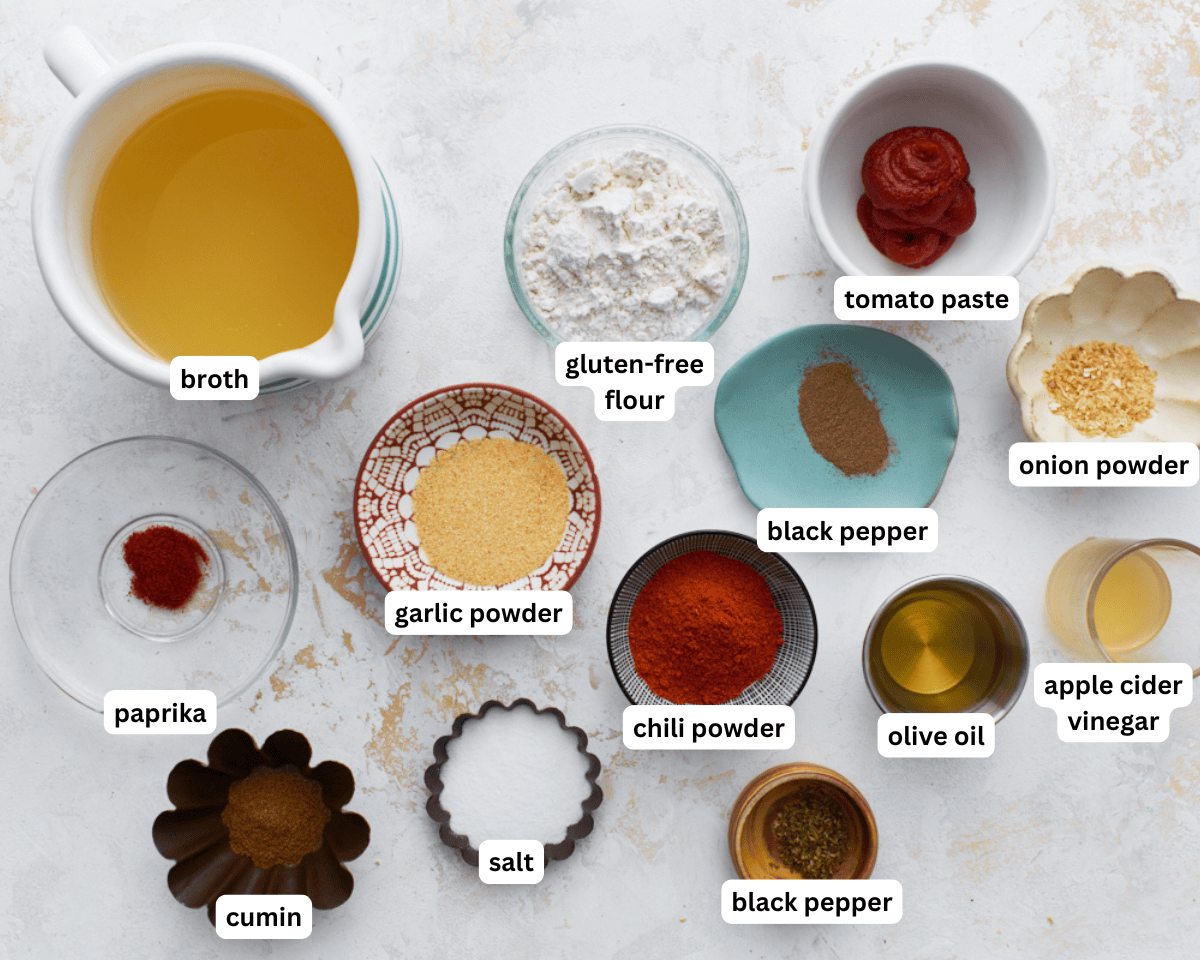
Gather all the ingredients together.
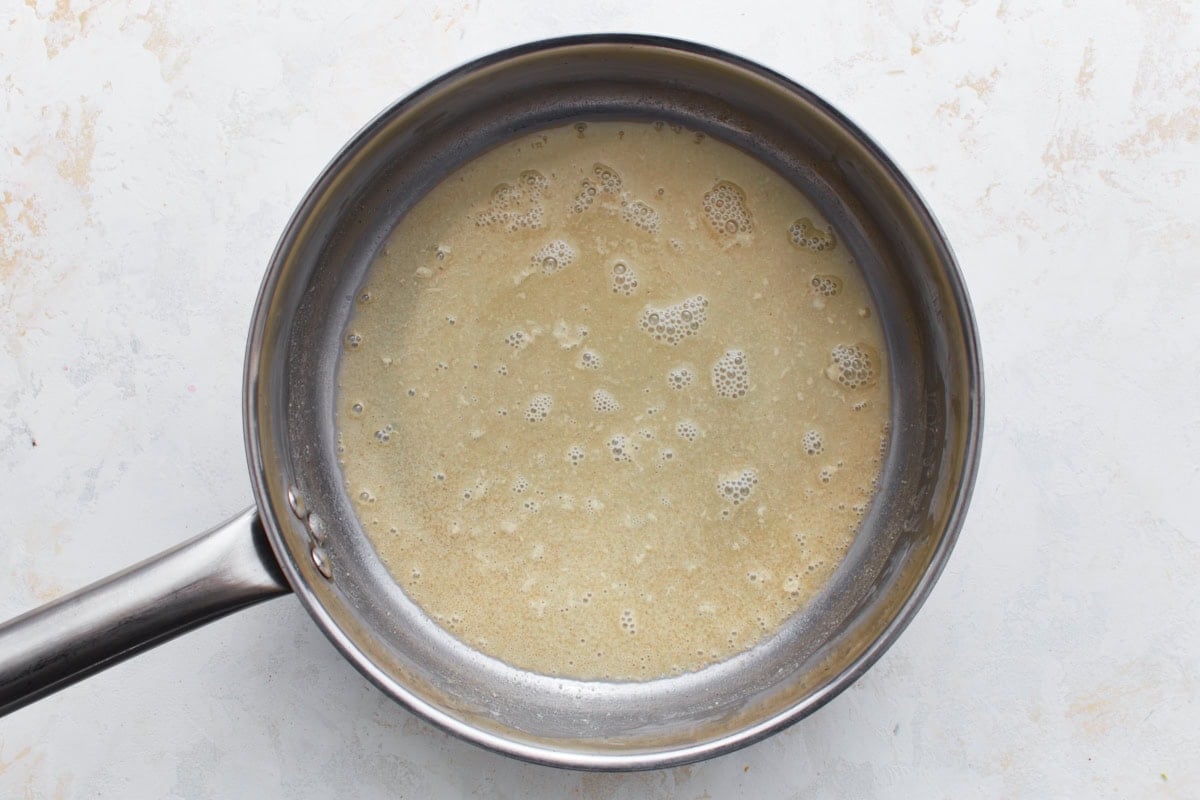
Make the roux: Heat 2 tbsp olive oil in a medium saucepan over medium heat. Whisk in 2 tbsp gluten-free all-purpose flour and cook for 1-2 minutes. Stir constantly until a smooth roux forms.
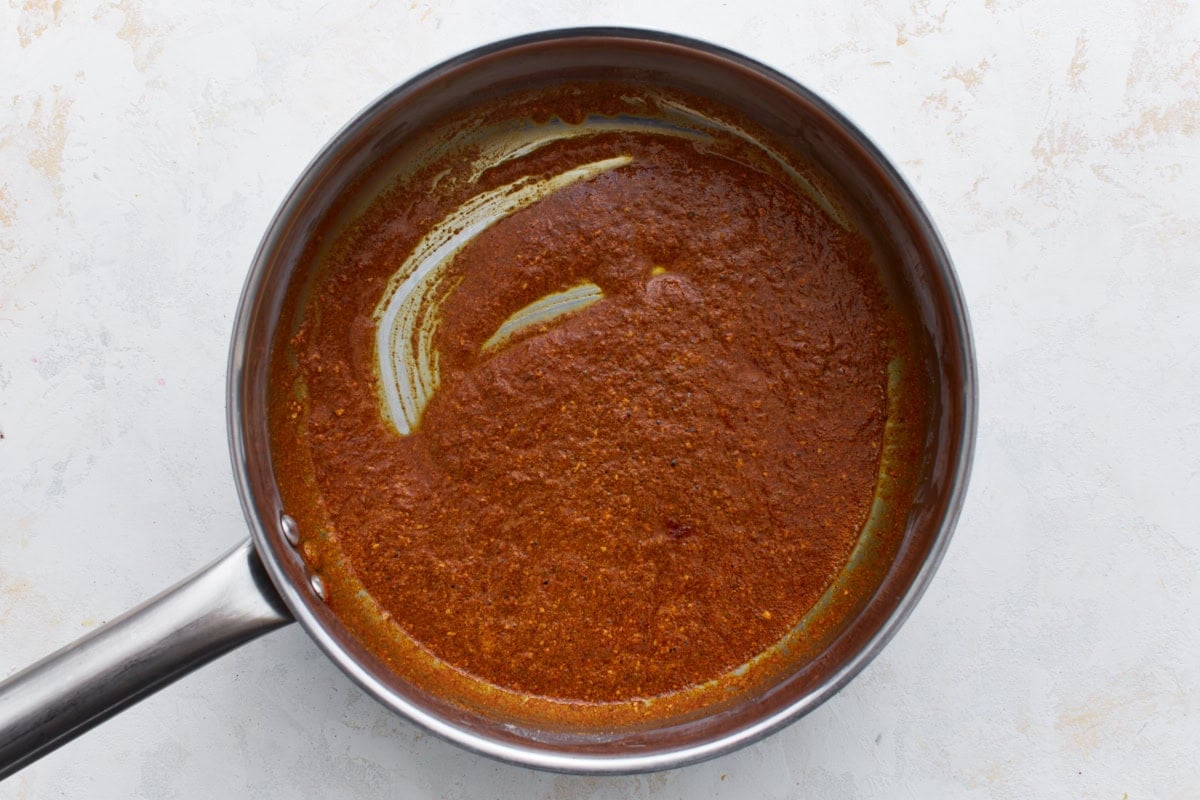
Add the seasoning: Add 1 tbsp chili powder (or your desired amount), ½ tsp garlic powder, ½ tsp onion powder, ½ tsp ground cumin, ¼ tsp dried oregano, ¼ tsp smoked paprika (optional), ½ tsp salt, and ¼ tsp black pepper. Cook for 30 seconds until the spices are fragrant.

Stir in the tomato paste: Whisk in 2 tbsp tomato paste until fully combined.

Add broth and thicken: Slowly pour in 1¾ cups gluten-free broth (chicken or vegetable) while whisking continuously to create a smooth, lump-free sauce. Bring the sauce to a gentle simmer and cook for 5–7 minutes, stirring frequently, until it thickens to your desired consistency.
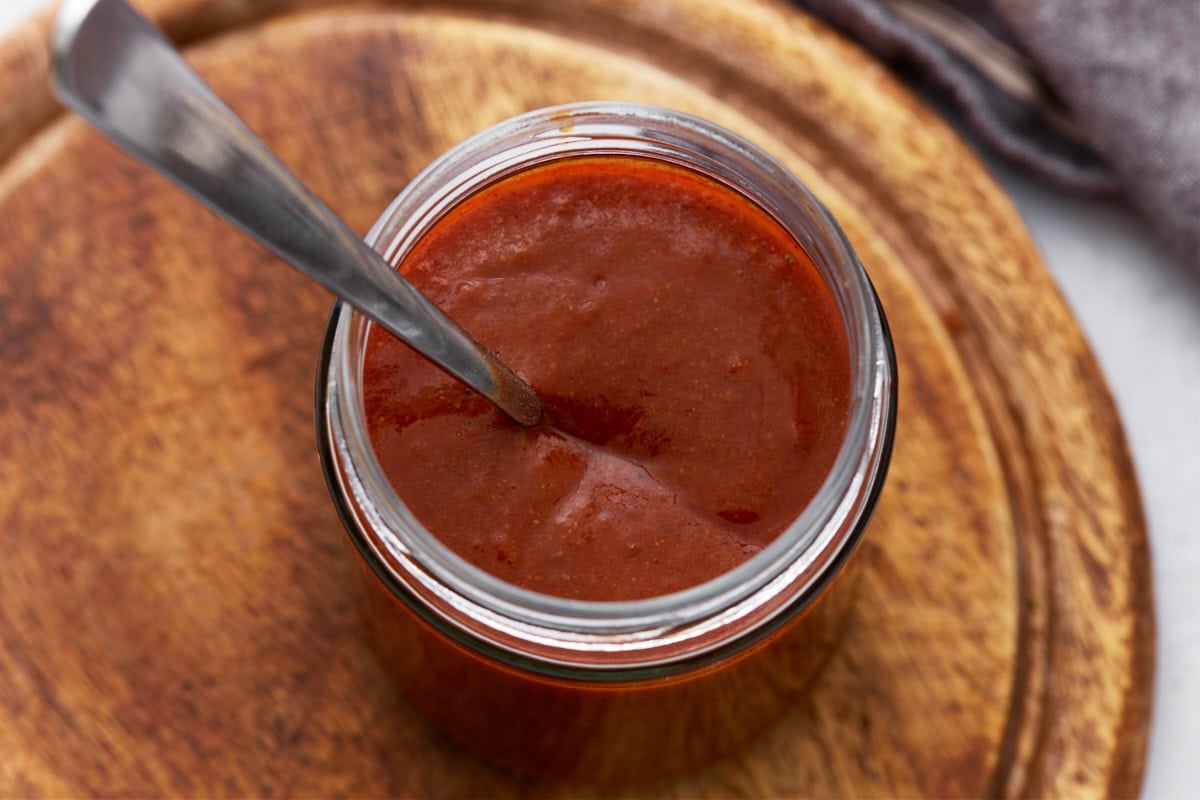
Finish the sauce: Stir in 1 tsp apple cider vinegar, then taste and adjust the seasoning as needed.

Cool and store: Remove from the heat and use right away, or let it cool completely and refrigerate for up to 5 days.
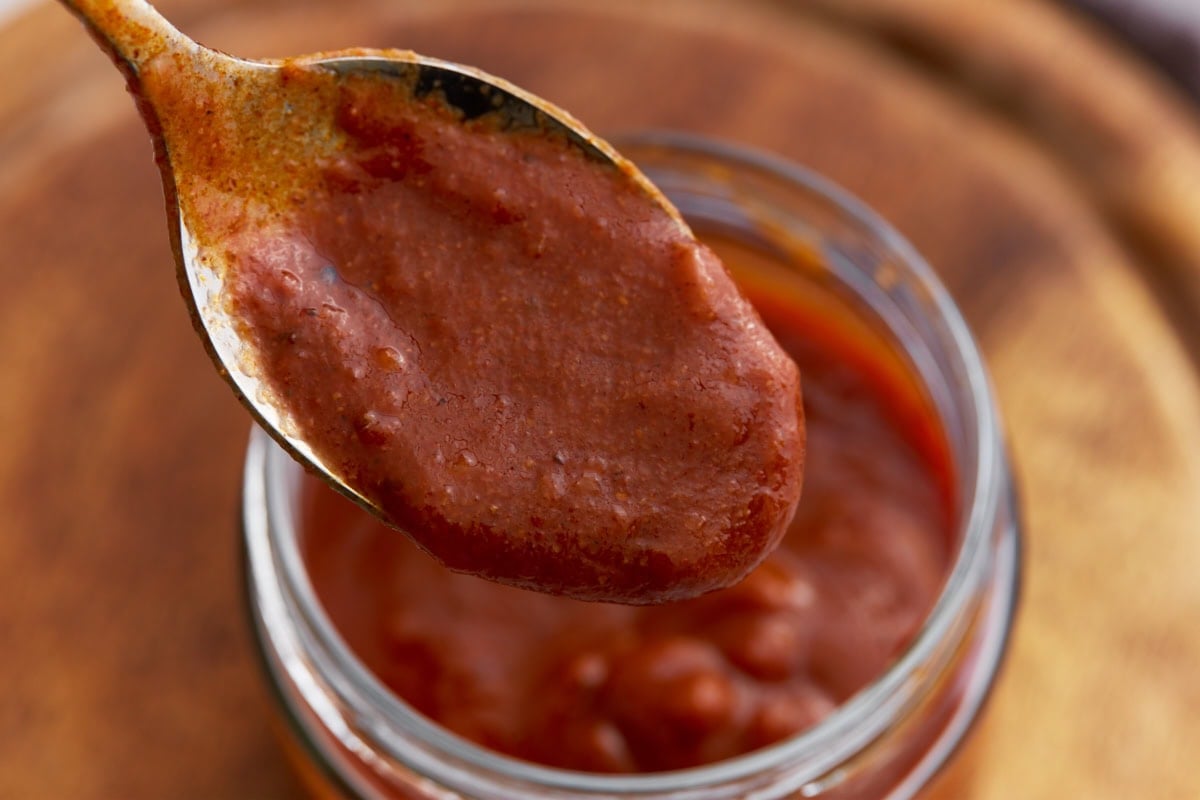
Serving Suggestions
I use this gluten-free enchilada sauce for all my enchilada recipes, but that is not all it’s good for. My family loves adding it to gluten-free burrito bowls, eggs in the morning, or my personal favorite, breakfast burritos. I also use it for all our taco nights, mixed in with our favorite taco meat for gluten-free tacos.
Storage Instructions
Store any leftover enchilada sauce in an airtight jar or container in the fridge for up to 5 days. For longer storage, let the sauce cool completely, then transfer it to freezer-safe containers or silicone trays and freeze for up to 3 months. When you’re ready to use it, thaw overnight in the fridge and reheat gently on the stovetop, stirring frequently until warmed through.
